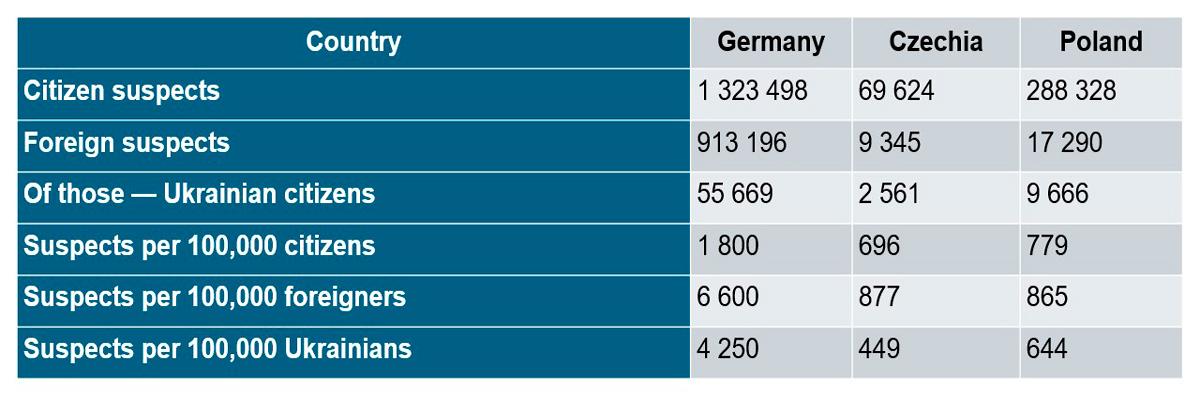The surge of refugees from Ukraine, along with high-profile crimes or offenses involving them, often sparks a backlash against the newcomers in European countries. This fuels fears that rising migration will drive up crime rates. Such conclusions are most often based on cherry-picked statistics, politicians' statements or discussion of sensational incidents involving Ukrainian citizens. At the same time, other views have been voiced: Ukrainians are often described as more law-abiding than other migrants. To test both hypotheses without emotion, we turned to the latest 2023 Eurostat data, national agency statistics and police reports.
What the Facts and Figures Show
Every country has people who commit crimes, so expecting any group to be entirely crime-free is unrealistic. What matters is how the crime rate among Ukrainian refugees compares to that of citizens in host countries.
We compiled official statistics and calculated the number of suspects per 100,000 residents: among citizens of the country, foreigners overall and Ukrainian nationals. This allowed us to assess crime rates in each of these groups.
In Poland, the Czech Republic and Germany, which host the largest numbers of Ukrainian refugees, the statistics show: in some cases their share is slightly higher, in others lower than among local residents.
Germany
According to 2024 data from the Federal Ministry of the Interior, Ukrainian citizens commit fewer crimes than foreigners on average. Suspects from Syria, Turkey and Romania appear more frequently in the statistics. Syrians rank first, accounting for roughly 5% of all suspects (regardless of citizenship), while Ukrainians make up only about 2.5%. This is explained by the fact that Ukrainian refugees include more women and children, while migrants from other regions are predominantly men, a group that statistically commits crimes more often.
At the same time, the crime rate among Ukrainians is higher than among German citizens: for every 100,000 Ukrainian passport holders, there are over 4,000 suspected of violating the law, compared to fewer than 2,000 among Germans.
The Czech Republic
In the Czech Republic, Ukrainians can be described as one of the most law-abiding groups. Representing roughly 5% of the country's population, they account for only 3% of all suspects.
In absolute numbers, Ukrainians do lead among foreign offenders, but this is explained by their population size. When comparing the number of Ukrainian citizens to the number of offenses, there are about 450 suspects per 100,000 people. By comparison, among all foreigners this figure is roughly twice as high, while among Czech citizens it's 1.5 times higher.
This shows Ukrainians break the law even less frequently than Czechs themselves.
Poland
Of the roughly 1.5 million Ukrainians officially living in Poland, fewer than 10,000 had run-ins with police in 2023 — less than 1%. By comparison, among Georgian citizens this figure is around 10%. The share of offenders among Ukrainians is lower than among Poles, and significantly below the average rate for all foreigners.
According to 2023 police data, the most common offense among migrants is driving under the influence.
The Bottom Line
- In all three countries, the crime rate among Ukrainians is below the average for foreigners;
- In the Czech Republic and Poland, they break the law less often than local residents;
- In Germany, the rate is higher than among the country's citizens.
Update 10/31/2025: In the "Germany" section, when comparing crime rates among Ukrainians and Germans, "offenders" has been replaced with "suspected of violating the law."
These materials were developed in 2025 for the Prebunking at Scale project, with support from the European Fact-Checking Standards Network.




